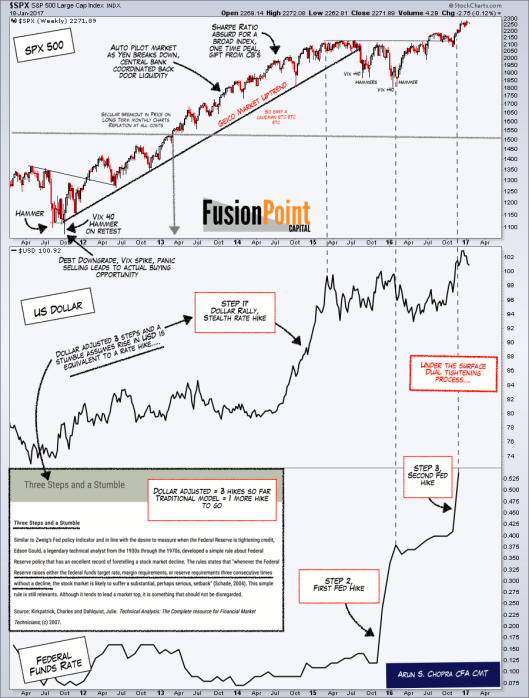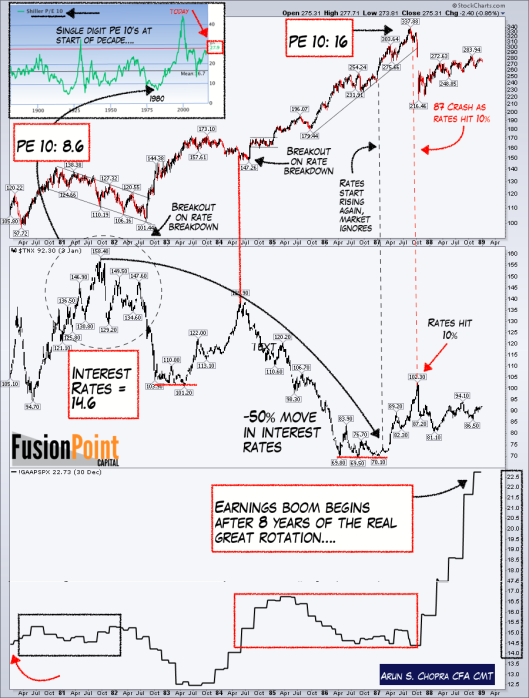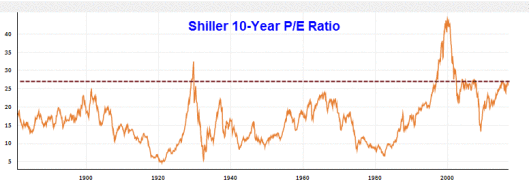The market is pricing in a lot of “Everything is Awesome”. Reader Jason Leach, CFA, asks
“Is all this awesomeness, real or fantasy? Has it been pulled forward?”
Pulling Awesome Forward
What follows is a guest post from Jason B. Leach of Fusion Point Capital. His title is Pulling Awesome Forward.
U.S. markets have “celebrated” the Trump election, with the S&P 500 rising ~8% after a quick ~4% drop pre-election (and much deeper drop in futures the night of the election). There are quite a number of themes, positive and negative, continuing into the new year from 2016. The “positives” – infrastructure spend, tax reform, healthcare reform, and deregulation – have built a relentless bid, or scared off sellers…for the time being.
The “negatives” – dollar strength, dollar scarcity, global debt bubble, Fed divergence, stress in European and Chinese banks, Yuan devaluation, rising populism in Europe (with French, Italian, German elections around the corner), low but rising probability of Euro-Exits, protectionist leanings (Smoot-Hawley tariffs contributed to a 66% decline in global trade from 1929-1934), and U.S. equity valuations at the third highest level ever (median stock on the S&P 500 at 98th percentile, and the all-time highest valuation for the index when including the enormous amount of corporate debt growth over the past decade) – are relegated to the dark recesses of pre-election…pre-light.
There are myriad estimates of what Trump’s policies could add to GDP and thus corporate earnings. If these policies are well thought out and passed quickly, no doubt there will be boosts. But, and there are several big “buts” here, with the current state of divisiveness, every issue is “third rail” and unless Republicans are willing to use the nuclear option (reconciliation where simple majority passes in the Senate) like a tactical weapon (i.e., repeatedly), the “positives” being pulled forward into today’s market pricing may take many more moons than anticipated. And, as detailed in iterations of Trillion Dollar Sam, these deep structural problems are decades in the making and will require more than outpatient Trump surgery in the first 100 days to rectify.
The Trump election is seen as the hand off or inflection point from monetary policy to fiscal policy. Significant infrastructure would have been nice…5-6 years ago before the national debt rose another 33% to ~$20 trillion (missed window), and before the Fed started a hiking cycle. If infrastructure is somehow passed this year, and employment and wages continue to improve, the Fed could be forced to move faster. This could contribute more to dollar strength (along with repatriation, a potential border tax/tariff, and dollar shortages in Europe and Asia). Fed hikes (particularly moving the 10-year above 3%) and a continuation of the bull market dollar move could ameliorate the benefit from infrastructure spend, tax fixes, deregulation etc., or worse, invert the yield curve (historical 9-month to 1-year lag to recession), disrupt markets (more on this below), and put a pin closer the $231T global debt bubble, where dollar denominated debt approximates $57T. Remember, the last two major bull market dollar moves ended in crises in Latin America in the mid-late ‘80s, and Asia/Russia in the late ‘90s.
S&P 500: Gimme Three Steps
Every recession has been preceded by a significant increase in Fed Funds, margin or reserve requirements – tightenings. And as my colleague Arun Chopra, CFA CMT notes, major market downdrafts can occur after “3 steps and a stumble”. Some argue that 75-100 basis points, or 3-4 increases is not significant, but it comes off the zero bound and follows a 25% increase in the dollar. In Arun’s chart below, note the interesting “dollar tightening” perspective on this tightening cycle. Link to content here.
- From late 2011 through late 2015, the S&P 500 glided up on Fed & BOJ QE-induced auto pilot.
- Since late 2014, the dollar has risen 25% and the Fed has raised the Fed Funds rate twice – 3 effective tightenings.
- These three tightenings did not result in market declines.

“Three steps and a stumble” posits that if markets endure three hikes without declines, they are vulnerable to a substantial or serious setback possibly on the fourth hike. Interesting perspective.
And, below is another chart from Arun contrasting the 1980s rate environment, valuations and S&P 500:
- At Reagan’s inauguration, PE10 was 8.6x and 10-year Treasury yields were 14.6%.
- From ’81 to ’87 markets witnessed a 50% decline in rates, and a 100% increase the S&P 500.
- Earnings growth began to take off after 8 years of “real great rotation” from fixed income to stocks.

Today, the S&P 500 PE10 stands at 27.9x and 10-year Treasury Yields at 2.47%, pretty much the opposite scenario. A great rotation from here would be much different in a debt laden world.
The euphoria in markets is based on a seismic change in policy. The questions are on timing, efficacy, and whether the Fed tightening cycle overcomes any benefits. And, the environment today is much different than the 1980s, and just ten years ago.
The market is pricing in a lot of “Everything is Awesome”, but has all that awesome, real or fantasy, been pulled forward? We will see. – Jason B. Leach, CFA
Mish Comments
Thanks Jason. That was an outstanding set of graphics and text. Here’s one more chart from Quandl.Com on the 10-year Shiller P/E.

History shows the 10-year P/E is at one of the most stretched valuations in history, exceeded only by the dot-com bubble, housing bubble, and 1929.
Not to fear, other than P/E 10, trade wars, real wars, robots, protests, terrorism, and bond market bubbles, “Everything is Spankin’ Awesome”.
